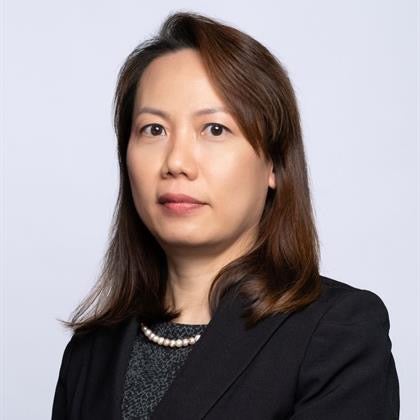
A combination of favourable demographic trends and low insurance penetration make Southeast Asia attractive to life insurance companies. In particular, the outlook is very positive for Singapore and Indonesia’s life insurance markets, according to reports from Timetric’s Insurance Intelligence Center
Sustained economic development, a rapidly growing older population, rising life expectancy and increased high net worth individual (HNWI) business contributed to the Singaporean market’s growth during 2009-2013
This is a key message from the report Life Insurance in Singapore, Key Trends and Opportunities to 2018, which is available at Timetric’s Insurance Intelligence Center (IIC).
The report explains that by 2018 Singapore’s positive economic development, growing offshore business, rising HNWI business and government initiatives to make traditional life insurance universal are forecast to boost the Singaporean life insurance sector.
The Singaporean life insurance segment accounted for 66.5% of the overall insurance industry’s gross written premium in 2013. By contrast, the non-life insurance segment accounted for 21.8% of the overall insurance industry’s gross written premium in 2013.
By 2018, the gross written premium of the life insurance segment is expected to increase from SGD20.2bn (US$14.9bn) in 2013 to SGD28bn.
How well do you really know your competitors?
Access the most comprehensive Company Profiles on the market, powered by GlobalData. Save hours of research. Gain competitive edge.

Thank you!
Your download email will arrive shortly
Not ready to buy yet? Download a free sample
We are confident about the unique quality of our Company Profiles. However, we want you to make the most beneficial decision for your business, so we offer a free sample that you can download by submitting the below form
By GlobalDataLooking forward to 2018, key growth drivers for Singapore’s life insurance sector include:
- HNWIs support unit-linked insurance products
- Regulatory change
- Stable economic growth
HNWIs support unit-linked insurance products: Singapore is among one of the world’s wealthiest countries. According to Swiss bank Julius Baer’s Lifestyle Index, Singapore’s HNWI population is expected to reach 129,000 by 2015, with a combined wealth value of approximately SGD778.1bn.
The rising number of HNWIs provides an opportunity for life insurers to develop customized products. HNWIs typically buy insurance products which provide life cover with an investment option, and tend to favour unit-linked products which provide a modest return on investment with life cover.
Regulatory change: With an objective to strengthen the standards of risk management among insurance companies operating in Singapore, the Monetary Authority of Singapore (MAS) issued a notice regarding enterprise risk management (ERM) to the country’s insurance companies in 2013.
Under this notice, insurance companies are expected to identify and manage risk. This is expected to enhance insurers? risk-management abilities, which will benefit the Singaporean insurance industry.
Stable economic growth: Singapore posted impressive growth in 2010 and 2011 of 15.2% and 6.1% respectively. The IMF forecasts stable economic development in Singapore at a CAGR of 3% between 2013 and 2018. This is expected to lead to an increase in per capita disposable income, which will encourage the purchase of unit-linked and pension products.
Commenting on the Singaporean life insurance market, Aviva Asia’s CEO, Khor Hock Seng, tells Life Insurance International that despite several years of healthy growth, Singapore still has a large protection gap and an aging population.
Seng says: “There are considerable growth opportunities here by focusing on health and protection products, in particular offering retirement propositions catering to the aging population.”
The main challenges facing Singapore’s life insurance market include:
- An increase in fraud and crimes
- Decrease in investment income
An increase in fraud and crimes: Increasing fraud and crimes are expected to pose a challenge to life insurance companies operating in Singapore. In value terms, fraud and crimes are expected to increase over the forecast period from SGD0.9bn in 2013 to SGD1bn in 2018, after registering CAGR of 2.3% between 2013 and 2018.
Decrease in investment income: A high investment income indi¬cates that a company has the capacity to pay claims, and vice versa.
The total investment income of the Singaporean life segment decreased from SGD14.2bn in 2009 to SGD2.2bn in 2013, at a review-period CAGR of -37.5%.
The decrease was a result of the country’s low interest environ¬ment, and acted as deterrent for life insurance companies.
Competitive Landscape
The Singaporean life insurance segment is highly concentrated, with the ten leading companies together accounting for 81.4% of the segment’s total gross written premium in 2013.
Prudential Assurance was the leading company in the segment, accounting for 16.9% of the segment’s written premium in the same year.
Furthermore, the top five insurers – Prudential Assurance, Great Eastern Life, AIA Singapore, NTUC Income and Overseas Assurance – together accounted for 64.6% of the segment’s total gross written premium that year.
Distribution
Singapore’s life insurance market is considered to be over serviced and a defined market as there are only a few well-established providers and over 12,000 tied agents operating to serve a population of fewer than 6m.
Agencies play a critical role in the growth of life insurance in most South Asian countries, including Singapore, and accounted for 46.0% of the total new written premium in Singapore’s life segment in 2013.
Due to the emerging popularity of other distribution channels, however, the number of new life policies sold through agencies fell from 695,271 in 2009 to 692,097 in 2013, at a CAGR of 0.1% from 2009-2013.
The number of partnerships between insurers and domestic banks to cross-sell life products is also increasing rapidly, and bancassurance is consequently gaining popularity.
Insurance brokers accounted for the third-largest share (16%) of new business written premium in 2013.
A number of life insurers, including NTUC Income, Great Eastern Life and HSBC Insurance, partnered with brokers such as Ng Cheng Quee Pte Ltd and Aon Risk Services Singapore Pte Ltd in order to market their life insurance products.
Furthermore, the evolution of e-commerce is expected to play a significant role in the sale of life insurance products between 2013 and 2018, due to its cost advantages and convenience.
Consequently, the volume of policies sold through e-commerce increased from 3,916 in 2009 to 4,630 in 2013, at a CAGR of 4.3% from 2009-2013.
Although agents and brokers are the dominant distribution channels, the increased use of mobile phones is encouraging companies such as AIA to develop iPad and smartphone apps.
Great Eastern has implemented a programme called Life Is Great, which provides health-related tips and information, as well as Singapore’s first health and wellness credit card. The programme also includes 13 online apps featuring health articles.
Indonesia
Indonesian market
Despite being in the early stages of development, the Indonesian insurance industry expanded significantly during 2009-2013, according to the IIC report Life Insurance in Indonesia, Key Trends and Opportunities to 2018.
In terms of gross written premium, the Indonesian insurance sector rose from IDR88.5 trn ($6.9bn) in 2009 to IDR209.5 trn in 2013.
Indonesia’s life segment accounted for 76.3% of the gross written premium of the overall insurance industry in 2013. The non-life segment accounted for 18.1% of the overall insurance industry’s gross written premium in 2013.
Indonesia’s life segment’s gross written premium grew from IDR57.6trn in 2009 to IDR160trn in 2013. The growth was gener¬ated largely by unit-linked and endowment products, encouraged by the country’s favourable business and economic conditions.
By 2018, the gross written premium of Indonesia’s life insurance market is expected to reach IDR333.6trn as increased awareness levels, product innovation and relatively high returns on investment are expected to further increase sales of unit-linked, pension, endowment and other life insurance products.
Looking forward to 2018, among the key trends and drives in the Indonesian life insurance industry include:
- Increasing life expectancy to drive up premium costs
- Favourable demographic structure
- Increasing life expectancy
- Strong economic development
Favourable demographic structure: The Indonesian population is expected to reach 262.8 million in 2018 at a forecast-period CAGR of 0.9%.
With the majority of the country’s population of working age, there is a huge potential for life insurance products, which is expected to continue between 2009-2013.
Increasing awareness among Indonesians towards the need for insurance and improvements in the distribution network through bancassurance and e-commerce are expected to encourage people to spend on insurance.
Increasing life expectancy to drive up premium costs: Increased life expectancy among the Indonesian population was another key growth driver for the life segment during the review period.
According to World Bank statistics, from 2008 to 2012, the average life expectancy in Indonesia increased from 69.7 to 70.7 year.
Strong economic development: The IMF depicted robust economic development for Indonesia at a CAGR of 6.2%from 2009-2013, and estimated Indonesia’s GDP to grow at a CAGR of 5.8% between 2013 and 2018.
The economic growth is anticipated to fuel consumer and business confidence, which is likely to increase the demand for life insurance products as individual and corporate Indonesian buyers purchase more unit linked and pension products.
As a result, the life insurance segment is expected to grow in terms of gross written premium value from IDR159.9trn in 2013, to IDR333.6trn in 2018.
Wan Siew Wai, senior director at Fitch Ratings in Singapore, explains that following the projected average annual economic growth rate of 5.6% over 2014-2017 coupled with the expanding middle class, Indonesian life insurance is poised for further growth.
Wai says key trends emerging in the Indonesian life insurance sec¬tor include the continued importance of bancassurance as a distribution channel, as insurers rely on the vast customer base of banks, and M&A interest from abroad as the sector continues to offer attractive growth prospects.
According to Angela Koechli, head of life and health, at Peak Re, Indonesia’s growing middle class and low insurance penetration coupled with an economic power house is putting it in the “sweet spot” for life insurance growth, both for conventional and Takaful insurance, and there is also high demand for microinsurance.
“The combination of these facts makes Indonesia the greatest growth potential market within the ASEAN region,” says Koechli.
Among the main challenges facing the Indonesian life insurance segment are:
- Business restrictions for insurers
- Growth in Takaful insurance to affect private insurance
Business restrictions for insurers: Indonesian insurance regula¬tions formed by the OJK have certain restrictions for both foreign and domestic insurers interested in operating in the country.
Foreign insurers cannot directly open a branch under a company to write insurance in the country. However, they can be licensed as a PT (limited company) in Indonesia, although foreign insurers investing in the country cannot exceed 80% foreign ownership.
Growth in Takaful insurance to affect private insurance:
Indonesia has one of the world’s largest Muslim populations, and with favourable regulatory changes by the insurance regulator, is estimated to be the world’s fastest-growing market for Takaful insur¬ance.
The favourable conditions for Takaful insurers are expected to affect and challenge the growth of private insurance.
Southeast Asian trends
Commenting on the broad trends impacting life insurers in Southeast Asia, Peak Re’s Koechli says the ASEAN Economic Community (AEC) [which has the goal of regional economic integration by 2015] is gearing up for 2015 because will also allow insurers of the member countries (Brunei, Cambodia, Indonesia, Laos, Malaysia, Myanmar, Philippines, Singapore, Thailand and Vietnam) to operate across the ASEAN market.
Koechli explains that the ten countries are in different stages of insurance market development and it will inevitably bring more competition to these markets.
She says: “Smaller companies may need to build-up core capabili¬ties in product innovation and delivery.”
Meanwhile, Wan Siew Wai notes that Southeast Asian life insur¬ers are challenged to manage their investment portfolio carefully to minimize volatility in their investment returns and protect themselves from extreme shocks.
Wan Siew Wai says: “There is generally a lack of long-term dura¬tion assets in terms of breadth and depth in APAC countries; hence insurers are challenged to manage their asset-liability duration gap carefully.”
Asked about regulatory developments affecting the life insurance market in Southeast Asia, Seng says the regulatory landscape continues to evolve with a focus on risk and solvency management as well as greater interest in sales practices.
“Examples include the full implementation of FAIR in Singapore, as well as increased scrutiny on customer data protection and new risk-based capital requirements across the region.
[According to the Monetary Authority of Singapore, (MAS) the Financial Advisory Industry Review (FAIR) proposals will raise the standards of the financial advisory industry, and encourage greater efficiency in the distribution of life insurance.It is also intended that the FAIR proposals will create a more com¬petitive market for insurance products.
MAS aims to implement the full suite of FAIR initiatives in 2015. For example, MAS has said the launch of a web aggregator for consumers to compare the premiums and features of life insurance products is targeted in Q1 2015].
Seng adds: “All international insurers, like Aviva, benefit from being able to draw on their experience of other regulatory environments around the world to respond to these regulatory changes effectively.”
Industry View: Benoit Claveranne, CEO Life, AXA Asia
Insurance in Asia is maturing and client needs are changing. There are three key trends that must be addressed if companies are to match the pace of the market.
First is the growing elderly population in Asia, coupled with a weak social safety net. United Nations projections show the proportion of those aged 65 and older will surpass the proportion of children (aged 0-15) in South Korea, Thailand, and China by 2030, while the threshold is 2040 and 2050 for Vietnam and Malaysia respectively.
As the level of wealth increases, individuals will seek private solutions to maintain their quality of life in old age.
Second, there is a strong move towards protection and health insurance solutions that will drive growth in the sector.
This is closely tied to the demographic changes mentioned earlier, requiring people to address medical and frail care costs arising from longer life expectancy.
It is also tied to the issue of medical costs and the digital revolution taking hold in the healthcare arena.
The third major trend is the demand from families to fund the education needs of their children.
The costs for quality schooling continue to grow and parents want their children to have the best possible start in a competitive market, so ensuring the money is available to help prepare the younger generation is instrumental.
Insurers will need to stay close to their clients in understanding how these trends impact their daily lives in order to deliver relevant health and protection solutions for these evolving needs.







